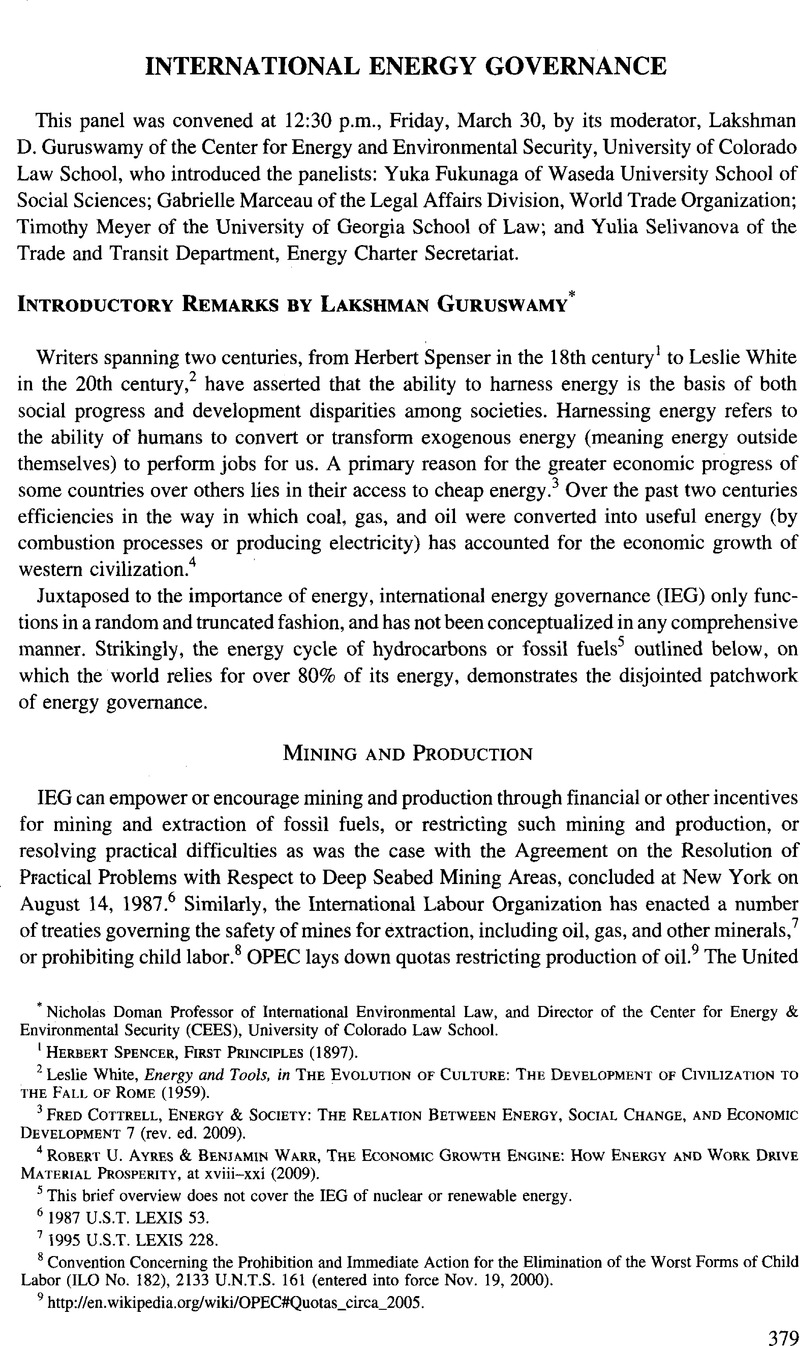Article contents
Introductory Remarks by Lakshman Guruswamy
Published online by Cambridge University Press: 28 February 2017
Abstract

- Type
- International Energy Governance
- Information
- Copyright
- Copyright © American Society of International Law 2012
References
1 Herbert Spencer, First Principles (1897).
2 White, Leslie, Energy and Tools, in the Evolution of Culture: the Development of Civilization to the Fall of Rome (1959)Google Scholar.
3 Fred Cottrell, Energy & Society: the Relation Between Energy, Social Change, and Economic Development 7 (rev. ed. 2009).
4 Robert U. Ayres & Benjamin Warr, The Economic Growth Engine: How Energy and Work Drive Material Prosperity, at xviii-xxi (2009).
5 This brief overview does not cover the IEG of nuclear or renewable energy.
6 1987 U.S.T. Lexis 53.
7 1995 U.S.T. Lexis 228.
8 Convention Concerning the Prohibition and Immediate Action for the Elimination of the Worst Forms of Child Labor (ILO No. 182), 2133 U.N.T.S. 161 (entered into force Nov. 19, 2000).
10 See generally Lakshman D. Guruswamy, International Environmental Law in A Nutshell, ch. 11 (4th ed. 2011).
11 See generally Regulating Energy and Natural Resources (Barry Barton, Alastair Lucas, Lila Barerra- Hernández & Anita Rønne eds., 2006).
12 See generally Guruswamy, supra note 10, chs. 9, 10. Professor, Waseda University; Assistant Legal Counsel, Permanent Court of Arbitration. These remarks represent the author’s personal views and do not represent the views of the Permanent Court of Arbitration.
- 1
- Cited by


